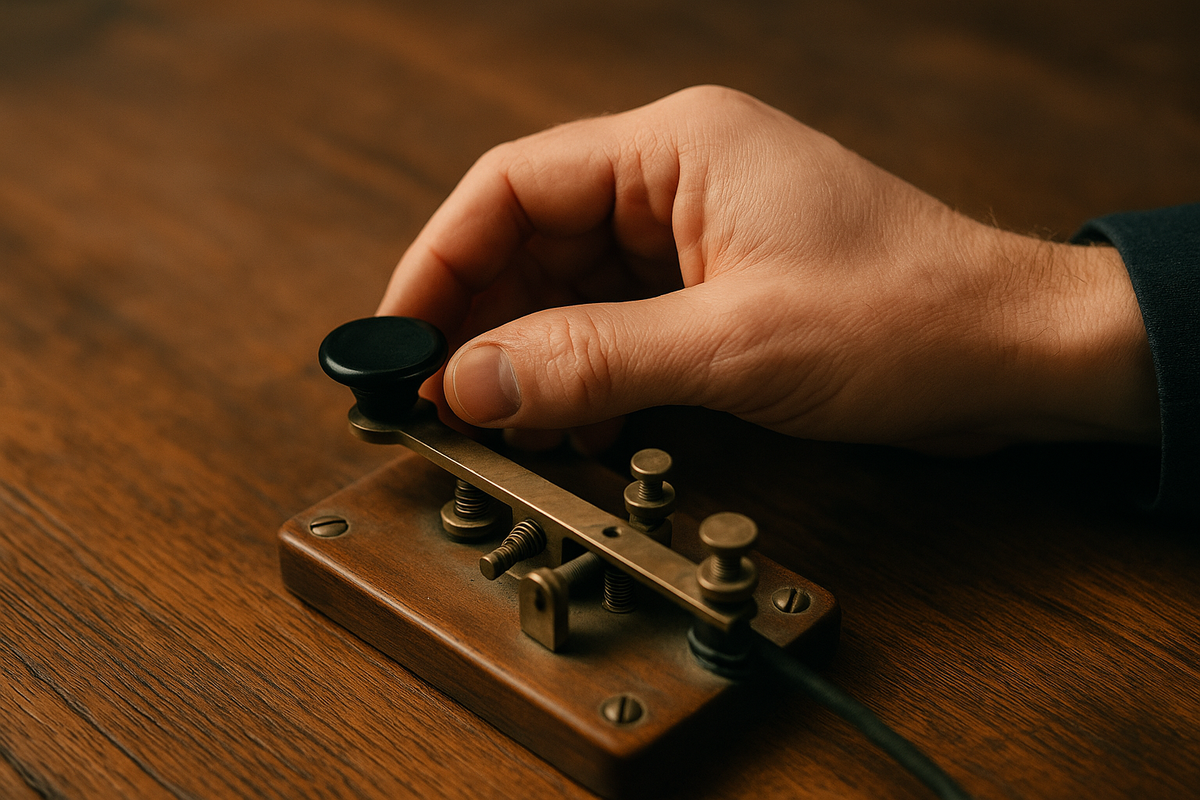
By Jenny Holly Hansen | WBN News | May 9, 2025
I’ve always found Morse code fascinating—this strange, rhythmic language of dots and dashes that once carried life-or-death messages across oceans. It's easy to assume that something so old-fashioned would have faded into history by now, replaced by our smartphones and satellites. But when I started digging a little deeper, I realized Morse code is far from extinct—it’s just evolved into a quieter, specialized role in our modern world.
Invented in the 1830s by Samuel Morse and Alfred Vail, Morse code was designed to send complex information over telegraph lines quickly and accurately. At the time, it was revolutionary. Before Morse code, long-distance communication relied on physically transporting messages—a process that could take days or even weeks. Suddenly, with a few taps and pauses, people could communicate almost instantly across great distances.
For more than a century, Morse code dominated. It was essential during wars, for maritime navigation, and for early aviation. Pilots, sailors, soldiers, and telegraph operators around the world all learned it by heart. Even after the invention of the radio, Morse code continued to thrive, transmitted over the airwaves in patterns of sound and light.
But with the arrival of more sophisticated technologies—telephones, digital communication, GPS—the everyday need for Morse code naturally declined. In 1999, the International Maritime Organization officially removed the requirement for Morse code proficiency in commercial shipping. For many, that announcement marked the "end" of Morse as a mainstream communication tool.
And yet, it never really disappeared.
Today, Morse code still has a devoted following, and it remains useful in surprising ways:
1. Amateur Radio (Ham Radio)
Morse code is alive and well in the ham radio community. Enthusiasts appreciate its reliability, especially in low-signal conditions where voice transmissions might fail. Morse signals can punch through static, interference, and even poor weather better than spoken words.
2. Emergency Communications
In life-or-death situations where technology fails—power outages, remote rescues, or equipment malfunctions—Morse code can still save lives. Tapping "SOS" (··· ––– ···) is universally recognized as a distress signal.
3. Military and Aviation Training
Although its use has decreased, some military units and pilots still learn the basics of Morse for emergency situations, particularly special operations units that may operate in radio-silent conditions.
4. Accessibility
For individuals with severe disabilities, Morse code offers a means of communication. Assistive technologies can translate simple taps or blinks into full sentences, giving a voice to people who otherwise might not have one.
What I find most incredible is that Morse code endures not just because of necessity, but because of the community that treasures it. It’s a living link to our history—an art form of communication that values patience, rhythm, and precision.
In an age where communication is often frantic and disposable, there’s something beautiful about slowing down to send a message, one dot and dash at a time. Morse code reminds me that even in the race toward innovation, some old tools are just too good—and too meaningful—to leave behind.
Let’s Keep Talking:
Jenny is a business insurance broker with Waypoint Insurance. With 19 years experience, she will well versed in the technical aspects of business coverages.
She can be reached at 604-317-6755 or jholly-hansen@wbnn.news. Connect with Jenny on LinkedIn at https://www.linkedin.com/in/jenny-holly-hansen-365b691b/. Connect with Jenny at BlueSky: https://bsky.app/profile/jennyhollyhansen.bsky.social
Let’s Meet Up:
Jenny Holly Hansen is a cohost with Chris Sturges of the Langley Impact Networking Group. You are welcome to join us on Thursday’s from 4pm to 6pm at: Sidebar Bar and Grill: 100b - 20018 83A Avenue, Langley, BC V2Y 3R4
TAGS: #Jenny Holly Hansen #Morse Code #Dots and Dashes #Instant Communication #Wartime #Maritime Navigation #Early Aviation



